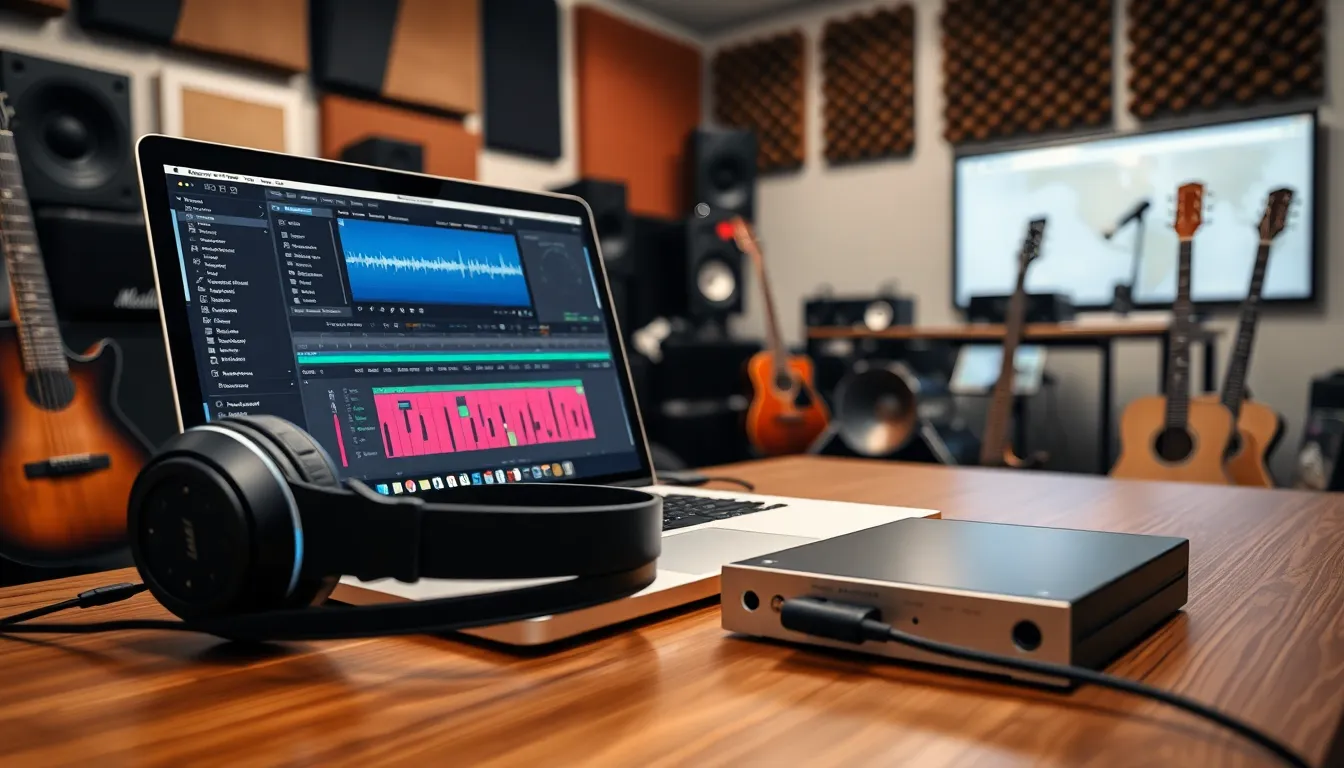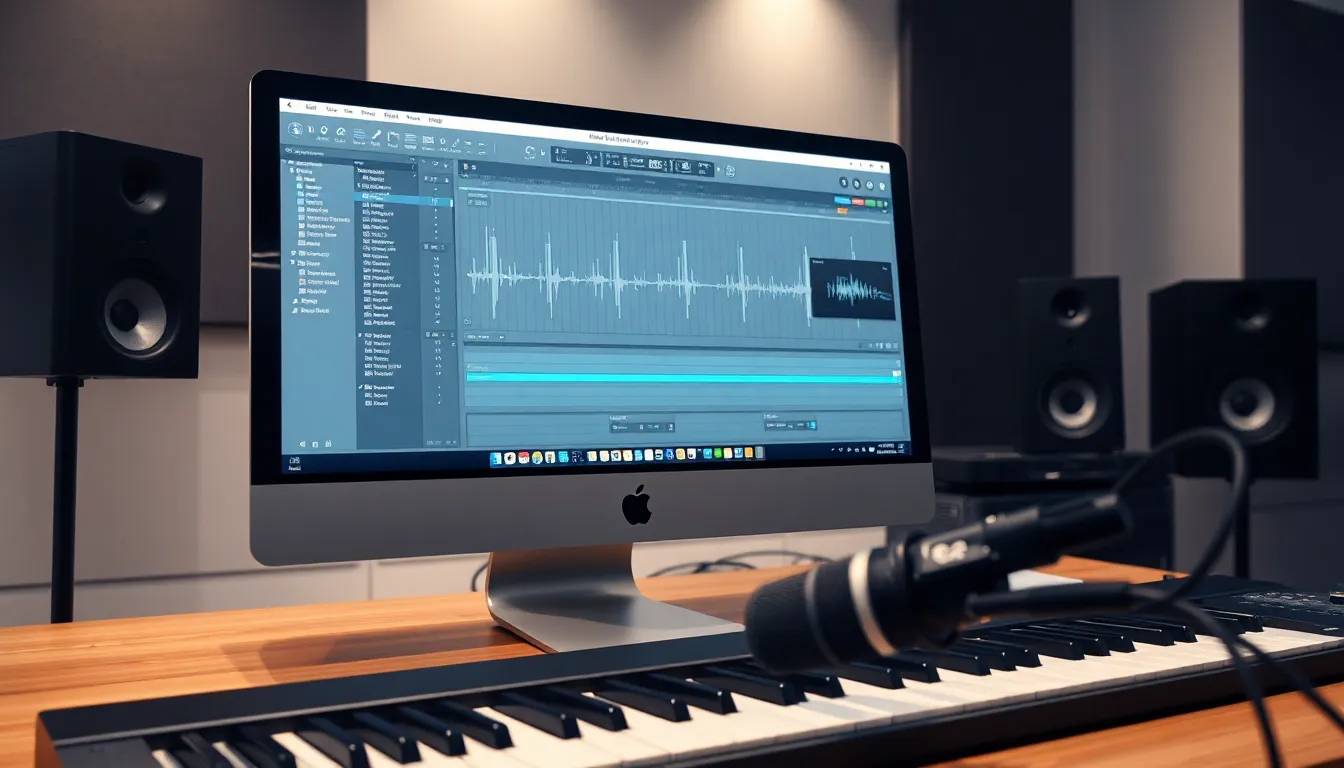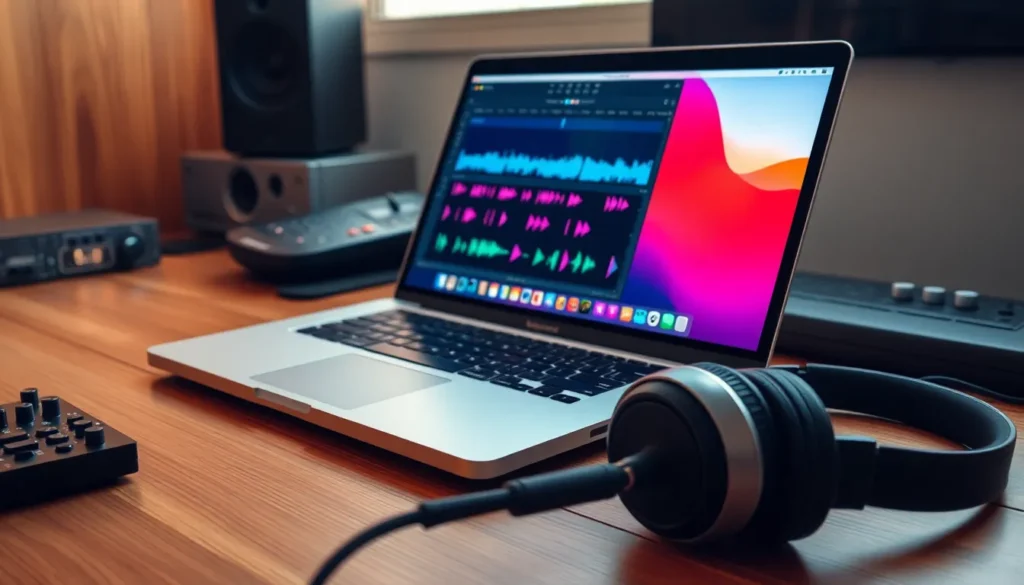Table of Contents
ToggleThinking about diving into the world of music production with Logic Pro? Before he starts composing that next chart-topping hit, he needs to make sure his system can handle the magic. After all, no one wants to face the dreaded spinning wheel of doom while trying to create the next symphony.
Understanding the system requirements isn’t just a technical detail; it’s the key to unlocking a seamless creative experience. Whether he’s a seasoned pro or a budding enthusiast, knowing what hardware and software are essential can save him from frustration and heartbreak. So let’s break down what it takes to ensure his setup is ready to rock and roll, and maybe even throw in a few laughs along the way.
Overview of Logic Pro
Logic Pro stands out as a leading digital audio workstation favored by music producers and composers. This software provides advanced tools for recording, editing, and mixing audio. Users benefit from a wide array of virtual instruments and effects, enabling them to explore various genres and styles. The intuitive interface allows for efficient navigation, enhancing the creative process.
Compatibility with macOS ensures that Logic Pro functions optimally on Apple devices. It supports systems running macOS Monterey 12.3 or later, which aligns with current user expectations for updates. Performance relies on sufficient hardware, making it essential to meet recommended specifications for an optimal experience.
Processor requirements include at least an Intel processor, with Apple Silicon offering improved performance. Storage space must be adequate, with a minimum of 6GB required for the initial installation. Additional content libraries may necessitate up to 72GB of available storage. RAM should meet or exceed 4GB, while 8GB optimizes multitasking capabilities.
Audio interfaces and additional peripherals enhance usability, offering more options for input and output. Users often utilize MIDI controllers for an enriched experience, linking seamlessly with Logic Pro’s capabilities. Staying informed about updates ensures access to the latest features and improvements, keeping the production process smooth.
Meeting system requirements plays a pivotal role in leveraging Logic Pro’s full potential. Assessing hardware and software specifications leads to fewer technical challenges and a more enjoyable music creation experience.
Minimum System Requirements


Meeting the minimum system requirements ensures optimal performance while using Logic Pro. It’s essential to know the specifications for a seamless music production experience.
Operating System
Logic Pro requires macOS Monterey 12.3 or later. Users operating older versions should upgrade to access the latest features and fixes. Compatibility with macOS is crucial, as it maximizes Logic Pro’s performance capabilities. Knowing the correct OS version helps avoid compatibility issues during installation.
Processor
An Intel processor is necessary for running Logic Pro efficiently. Users benefit from the improved performance offered by Apple Silicon, which enhances the overall experience. Checking the processor type ensures smooth handling of audio tracks and virtual instruments. Processors with multiple cores provide a significant advantage, allowing for better multitasking during complex projects.
RAM
A minimum of 4GB RAM is essential to run Logic Pro, but 8GB is recommended for better performance. This extra memory allows users to multitask without lag during demanding sessions. Checking RAM capacity helps ensure smooth operation when working on larger projects. Having sufficient RAM supports running multiple plugins simultaneously, enhancing productivity and creativity.
Storage
At least 6GB of storage is required for installation. Users should consider additional space for project files, samples, and plugins. Using a solid-state drive (SSD) significantly improves loading times and system responsiveness. Ensuring adequate storage space fosters a more efficient workflow, preventing interruptions during music production.
Recommended System Requirements
Meeting the recommended system requirements enhances the overall performance of Logic Pro, enabling users to maximize their creative potential.
Graphics
A graphics card with at least 512MB VRAM is essential for optimal performance within Logic Pro. It ensures smooth rendering of visuals and user interfaces when working with multiple tracks and effects. An OpenGL-compatible graphics card enhances the graphical experience of the software. Users benefit from a dedicated graphics card, as this can significantly improve rendering times compared to integrated options. For seamless operation, macOS systems equipped with advanced GPUs deliver better support for high-resolution displays.
Audio Interface
An audio interface plays a crucial role in achieving high-quality sound production with Logic Pro. Users should opt for interfaces that support low-latency performance, ensuring real-time audio monitoring without delays. Interfaces featuring USB, Thunderbolt, or FireWire connectivity provide flexibility and compatibility with various setups. High-resolution audio interfaces enhance the overall audio quality and allow users to connect multiple instruments simultaneously. Choosing an interface with robust preamps improves microphone input quality, making it suitable for vocal and instrument recording.
Compatibility with Mac Systems
Logic Pro functions exclusively on macOS, ensuring users leverage advanced features tailored for Apple hardware. Compatibility begins with macOS Monterey 12.3 or later, a crucial factor for smooth performance. Users who run older versions may face technical issues that hinder music production.
Hardware specifications significantly impact functionality. An Intel processor remains essential for basic operation, while Apple Silicon dramatically enhances performance. Choosing a minimum of 4GB RAM is necessary, with 8GB recommended to handle multiple tasks effectively. Many users benefit from having at least 6GB of storage available for installation.
Graphics capabilities play a vital role in the Logic Pro experience. Using a graphics card with a minimum of 512MB VRAM supports rendering of visuals and interfaces seamlessly. A dedicated graphics card improves rendering times and accommodates high-resolution displays, essential for professionals who require precision.
Audio interfaces enhance the production capabilities of Logic Pro significantly. Opting for interfaces that provide low-latency performance and high-resolution sound quality is advisable. Models equipped with robust preamps improve microphone input, making them suitable for various recording scenarios.
Monitoring system compatibility remains imperative as software updates occur. Regular checks ensure that hardware aligns with current software requirements and enhancements. Users aiming to unlock the full potential of Logic Pro must prioritize meeting these specifications, fostering a more enjoyable and efficient music creation process.
Meeting the system requirements for Logic Pro is vital for anyone looking to create music efficiently. With the right hardware and software in place users can focus on their creativity without technical interruptions.
Staying updated on compatibility and specifications not only enhances performance but also allows access to the latest features. By prioritizing these requirements musicians can fully harness the power of Logic Pro, ensuring a smoother and more enjoyable production experience. Embracing these guidelines paves the way for artistic expression and technical excellence in music creation.




